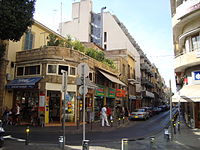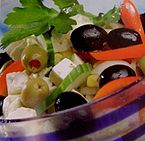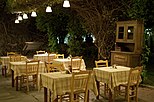
Greek cuisine is the cuisine of Greece and the Greek diaspora. In common with many other cuisines of the Mediterranean, it is founded on the triad of wheat, olive oil, and wine. It uses vegetables, olive oil, grains, fish, and meat, including pork, poultry, veal and beef, lamb, rabbit, and goat. Other important ingredients include pasta, cheeses, lemon juice, herbs, olives, and yogurt. Bread made of wheat is ubiquitous; other grains, notably barley, are also used, especially for paximathia. Common dessert ingredients include nuts, honey, fruits, sesame, and filo pastries. It continues traditions from Ancient Greek and Byzantine cuisine, while incorporating Ottoman, Balkan, and Italian influences.

Tzatziki, also known as cacık or tarator, is a class of dip, soup, or sauce found in the cuisines of Southern Europe and the Middle East. It is made of salted strained yogurt or diluted yogurt mixed with cucumbers, garlic, salt, olive oil, sometimes with vinegar or lemon juice, and herbs such as dill, mint, parsley and thyme. It is served as a cold appetizer (mezze), a side dish, and as a sauce for souvlaki and gyros sandwiches and other foods.
An hors d'oeuvre, appetiser or starter is a small dish served before a meal in European cuisine. Some hors d'oeuvres are served cold, others hot. Hors d'oeuvres may be served at the dinner table as a part of the meal, or they may be served before seating, such as at a reception or cocktail party. Formerly, hors d'oeuvres were also served between courses. There are two types of hors d'oeuvre from service point of view:
- General hors d'oeuvre
- Classical hors d'oeuvre

Souvlaki, is a Greek fast food consisting of small pieces of meat and sometimes vegetables grilled on a skewer. It is usually eaten straight off the skewer while still hot. It can be served with or inside a rolled pita, typically with lemon, sauces, vegetables such as sliced tomato and onion, and fried potatoes as a side. The meat usually used in Greece and Cyprus is pork, although chicken, beef, and lamb may also be used in some regions as well as worldwide.

A tavern is a type of business where people gather to drink alcoholic beverages and be served food such as different types of roast meats and cheese, and where travelers would receive lodging. An inn is a tavern that has a license to put up guests as lodgers. The word derives from the Latin taberna whose original meaning was a shed, workshop, stall, or pub.
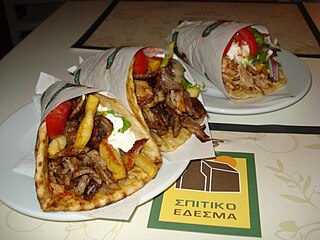
Gyros, sometimes anglicized as a gyro in some regions, is meat cooked on a vertical rotisserie, then sliced and served wrapped or stuffed in pita bread, along with other ingredients such as tomato, onion, fried potatoes, and tzatziki. In Greece, it is normally made with pork or sometimes with chicken, whilst beef and lamb are also used in other countries.

Meze is a selection of small dishes served as appetizers in Albanian, Bosnian, Armenian, Kurdish, Levantine, Turkish, Greek, Iraqi, Egyptian, Balkan, Caucasian and Persian cuisine, to name a few. It is similar to Spanish tapas and Italian antipasti. A mezze may be served as a part of a multi-course meal or form a meal in itself. In non-Islamic countries, or in areas without alcohol restrictions, mezze are often served with spirits such as arak, raki or grappa.

Kebab, kabob, or kebap or kabab is roasted meat that originates from the Middle East but has been popularised by Iranian cuisine & Turkish cuisine. Many variants of the category are popular around the world, including the skewered shish kebab and the doner kebab with bread.

Drunken chicken is a way of preparing chicken using alcoholic beverages. Different varieties of the dish exist in Chinese, Taiwanese, Malaysian, Singaporean, Greek and Latin American cuisine.

Cypriot cuisine is the cuisine of the island of Cyprus, shared by both Greek Cypriots and Turkish Cypriots.
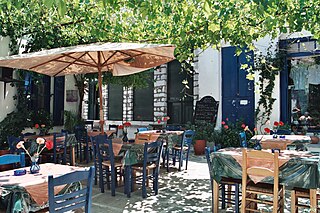
A taverna is a small Greek restaurant that serves Greek cuisine. The taverna is an integral part of Greek culture and has become familiar to people from other countries who visit Greece, as well as through the establishment of tavernes in countries such as the United States and Australia by expatriate Greeks.
Macedonian cuisine is the cuisine of the region of Macedonia in northern Greece. Contemporary Greek Macedonian cooking shares much with general Greek and wider Balkan and Mediterranean cuisine, including dishes from the Ottoman past. Specific influences include dishes of the Anatolian Greek, Aromanian and Megleno-Romanian, Slavic, Armenian and Sephardi Jewish population. The mix of the different people inhabiting the region gave the name to the Macedonian salad.

Pithari Taverna is a Greek restaurant located in Highland Park, New Jersey. The restaurant was founded by Tassos and Chrisanthe Stefanopoulo in 2006; the two had gained experience after operating a Greek foods store next door, New Athens Corner.

Greek-American cuisine is the cuisine of Greek Americans and their descendants, who have modified Greek cuisine under the influence of American culture and immigration patterns of Greeks to the United States. As immigrants from various Greek areas settled in different regions of the United States and became "Greek Americans," they carried with them different traditions of foods and recipes that were particularly identified with their regional origins in Greece and yet infused with the characteristics of their new home locale in America. Many of these foods and recipes developed into new favorites for town peoples and then later for Americans nationwide. Greek-American cuisine is especially prominent in areas of concentrated Greek communities, such as Astoria, Queens and Tarpon Springs, Florida.
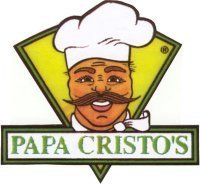
Papa Cristo's is a taverna styled Greek restaurant and market located in the Byzantine-Latino Quarter across the street from Saint Sophia's Church Greek Orthodox Church in Los Angeles, California.
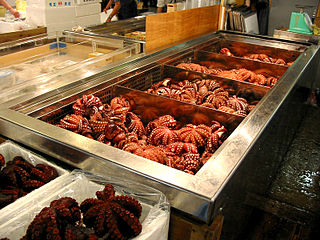
People of some cultures eat octopus. The arms and sometimes other body parts are prepared in various ways, often varying by species and/or geography.
Diane Kochilas is a Greek American cookbook author, celebrity chef, and cooking school owner. She has appeared on numerous American television programs, including Throwdown! with Bobby Flay, Bizarre Foods with Andrew Zimmern, The Today Show, PBS News Hour, and Martha Stewart. In Greece and Cyprus, Kochilas hosted the TV cooking show Τι Θα Φάμε Σήμερα Μαμά; on Alpha Channel and Sigma in Cyprus. She runs the Glorious Greek Kitchen Cooking School on the Blue-Zone Greek Island of Ikaria.
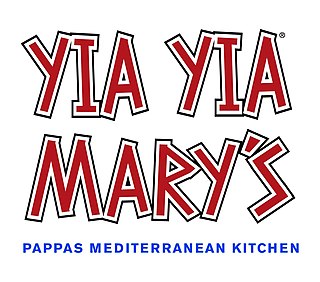
Yia Yia Mary's was a Greek restaurant with two locations in Houston, in the U.S. state of Texas. Pappas Restaurants opened the Uptown Houston restaurant in 2004, and second Yia Yia Mary's began operating at William P. Hobby Airport in 2015. The restaurants served Greek cuisine including seafood and received a generally positive reception. Both locations closed in 2020, during the COVID-19 pandemic.
Koutoukia are informal or underground restaurants or taverna, typically run by women, in Greece. The typical koutouki has between eight and ten tables and are often run in the owner's house. Some are operated in back yards, gardens, or basements. Traditionally koutoukia served only men.

Omega Ouzeri is a Greek restaurant and bar on Seattle's Capitol Hill, in the U.S. state of Washington.



